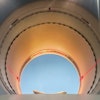Dear Molecular Imaging Insider,
Healthcare facilities around the U.S. have been struggling and scraping in recent years for every nickel and dime they can collect for providing critical imaging services. Unfortunately, for facilities involved in PET myocardial perfusion imaging, the situation is about to get worse.
The U.S. Centers for Medicare and Medicaid Services (CMS) plans to reduce the payment rate for PET myocardial perfusion imaging from $1,433 to $1,099 next year under the Hospital Outpatient Prospective Payment System.
Advocates for cardiac PET not only disagree with the final rule, they also say CMS should create a better methodology to eliminate dramatic fluctuations in payments from year to year. Read more about the reaction to the reimbursement reduction in this issue's Insider Exclusive.
This edition of the Insider also highlights a new integrated PET/MRI scanner to be launched at the RSNA meeting in Chicago this month. The work-in-progress scanner features a specially developed PET detector array that fits inside the MRI bore. Learn more about the system by clicking here.
Speaking of hybrid imaging technology, Australian researchers are using fused PET and MR images to better understand the long-term functional and structural changes that take place after traumatic brain injury. After inducing fluid percussion injury in the brains of rats, researchers found early widespread hypometabolic changes in certain regions of the brain and delayed progressive atrophic changes that continued to evolve for several months.
In other Molecular Imaging Digital Community news, associate editor Kate Madden Yee reports on a study from the Mayo Clinic in Rochester, MN, where researchers found that molecular breast imaging detects three times as many cancers as conventional mammography in women with dense breasts. The results are welcome news for this population, in which mammography appears to be less sensitive.
Kate also has details on how positron emission mammography (PEM) has improved specificity compared with breast MRI and is less likely to prompt unnecessary biopsies. The study, from researchers at the American College of Radiology Imaging Network in Lutherville, MD, compared PEM's performance and effect on surgical management to that of breast MRI in a cohort of 472 women with ipsilateral breast cancer.
Later this week, the worldwide radiology community will descend on Chicago for the RSNA annual meeting. If you can't make it to the Windy City, be sure to visit AuntMinnie.com on a daily basis to see the latest developments and research reports from this year's conference.




















